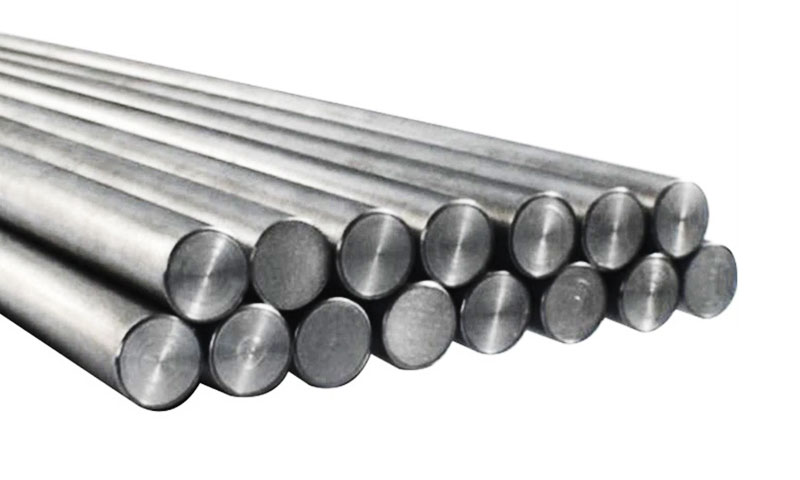1. Giới thiệu
CHÚNG TA S20910 (commonly marketed as Nitronic 50 hoặc XM-19) and UNS S21800 (commonly marketed as Nitronic 60 hoặc Hợp kim 218) are advanced austenitic Thép không gỉ engineered for demanding service.
Both deliver better performance than conventional 300-series grades, but they are optimized for different priorities:
- S20910 (Nitronic 50) là a chống ăn mòn, nitrogen-strengthened austenitic stainless optimized for high corrosion resistance (including sour service), sức mạnh tốt, Độ bền tuyệt vời (including cryogenic), và khả năng hàn tốt.
It is often specified where resistance to pitting, SCC and low-temperature toughness are required together with reasonable strength. - S21800 (Nitronic 60) is formulated primarily for wear and galling resistance while retaining corrosion resistance typical of austenitics.
It contains high silicon and manganese for tribological performance and is selected where sliding contact, Galling, and high wear are the dominant failure modes.
This article compares composition, mechanical and corrosion behaviour, sự chế tạo, and real-world application trade-offs so you can select the right alloy for a specific component or environment.
2. What Is UNS S20910 (Nitronic 50)
CHÚNG TA S20910, thường được gọi là Nitronic 50 hoặc XM-19, là a high-performance nitrogen-strengthened austenitic stainless steel.
It is engineered to deliver a combination of Kháng ăn mòn tuyệt vời, sức mạnh cao, độ dẻo, và sự dẻo dai, including at cryogenic temperatures.
These attributes make it well-suited for demanding industrial applications such as chemical processing, môi trường biển, and sour-service conditions.
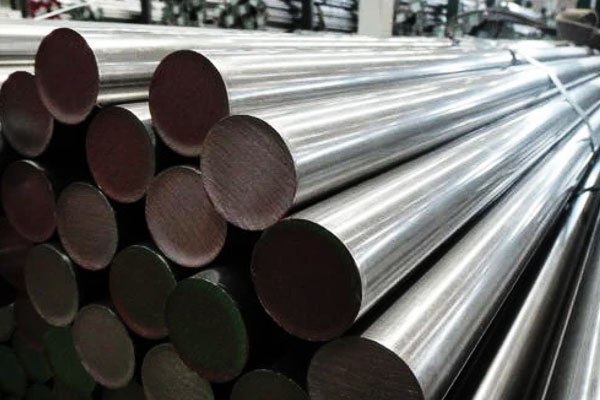
Key material designations and specifications bao gồm:
- ASTM A276 / A479 (as XM-19)
- UNS S20910
- TỪ 1.3964
Primary characteristics of UNS S20910 (Nitronic 50):
- Kháng ăn mòn: Enhanced by increased chromium, Molypden, và hàm lượng nitơ; highly resistant to pitting and crevice corrosion in chloride environments.
- Sức mạnh cơ học: Stronger than conventional 300-series stainless steels, with excellent yield and tensile properties.
- Ductility and toughness: Maintains performance at both elevated and cryogenic temperatures.
- Fabrication and weldability: Can be machined, hình thành, and welded with conventional techniques; solution annealing restores ductility after cold working.
- Nitrogen-strengthened: Nitrogen addition increases yield strength and contributes to pitting resistance without compromising austenitic ductility.
- Application suitability: Listed in NACE MR0175 for sour service, suitable for marine hardware, Thiết bị quy trình hóa học, Các thành phần áp lực, and structural applications requiring corrosion resistance and mechanical performance.
3. What Is UNS S21800 (Nitronic 60)
CHÚNG TA S21800, thường được gọi là Nitronic 60 hoặc Hợp kim 218, là a high-performance austenitic stainless steel designed primarily for wear and galling resistance, while maintaining good corrosion performance typical of austenitics.
Its specialized composition makes it ideal for applications where sliding contact, Mặc, and high surface stress are primary concerns.
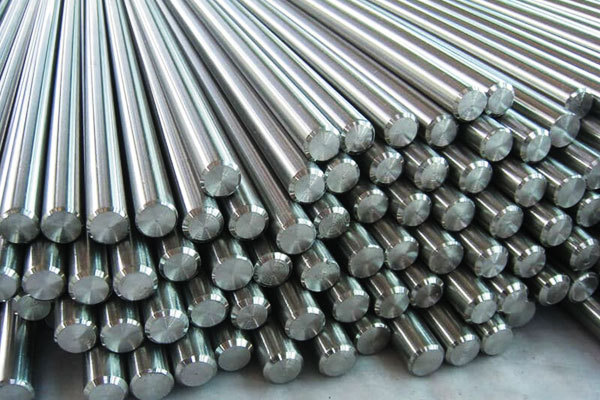
Key material designations and specifications include:
- ASTM A276 / A479 (for bars, que, and other wrought forms)
- UNS S21800
Primary characteristics of UNS S21800 (Nitronic 60):
- Wear and galling resistance: Elevated manganese and silicon content, combined with a nitrogen-strengthened austenitic matrix, provides superior resistance to Galling, Mặc, and surface seizure.
- Kháng ăn mòn: While not as corrosion-resistant as Nitronic 50 in highly aggressive chloride environments, Nó cung cấp Kháng ăn mòn chung tốt suitable for moderate chemical and marine exposures.
- Sức mạnh cơ học: Exhibits high strength in both annealed and cold-worked conditions, with excellent surface hardness after work hardening.
- Fabrication and welding: Can be welded and fabricated using standard methods, though its higher silicon and manganese content may require adjustments in welding filler selection and machining parameters.
- Application suitability: Thường được sử dụng cho Van thân, buộc chặt, Trục bơm, bearing surfaces, and other components subjected to repeated sliding contact or wear-intensive service.
4. Typical Chemical Compositions and Alloying Differences
A critical factor distinguishing UNS S20910 (Nitronic 50) and UNS S21800 (Nitronic 60) is their alloying strategy, which directly influences corrosion resistance, sức mạnh cơ học, wear behavior, and fabrication characteristics.
While both are nitrogen-strengthened austenitic stainless steels, they are optimized for different service priorities.
Representative Chemical Compositions (wt%) and Performance Role
| Yếu tố | UNS S20910 (Nitronic 50) | UNS S21800 (Nitronic 60) | Key Role in Performance |
| Carbon (C) | ≤ 0.06 | ≤ 0.10 | Controls strength, limits carbide formation; low C improves corrosion resistance and weldability |
| Crom (Cr) | 20–23 | 16–18 | Primary contributor to corrosion resistance; higher Cr in S20910 increases PREN |
| Niken (TRONG) | 11Mạnh14 | 8–9 | Ổn định Austenite; Tăng cường độ bền và độ dẻo; higher Ni in S20910 supports cryogenic performance |
| Mangan (Mn) | 5–6 | 8–9 | Increases work-hardening and galling resistance; high Mn in S21800 aids wear performance |
| Silicon (Và) | ≤ 0.5 | 3.5Cấm4.5 | Improves oxidation and wear resistance; higher Si in S21800 supports galling resistance |
| Molypden (MO) | 1.5–3 | Không được chỉ định / dấu vết | Tăng cường khả năng chống ăn mòn rỗ và kẽ hở; present in S20910 to resist chlorides |
| Nitơ (N) | 0.10Cấm0,20 | 0.08–0.18 | Strengthens austenitic matrix; Cải thiện khả năng chống ăn mòn; supports wear resistance in S21800 |
| Sắt (Fe) | Sự cân bằng | Sự cân bằng | Phần tử ma trận; balances alloying; provides basic austenitic structure |
Interpretation: S20910 emphasizes Cr + TRONG + MO + N (classic austenitic corrosion alloying with nitrogen strengthening and Mo for pitting resistance).
S21800 trades some chromium and nickel for elevated silicon and manganese, which improve hardness, wear and galling resistance.
4. Mechanical Properties and Temperature Behaviour
CHÚNG TA S20910 (Nitronic 50) and UNS S21800 (Nitronic 60) exhibit distinct mechanical profiles reflecting their alloying strategies.
Tính chất cơ học chính
| Tài sản | UNS S20910 (Nitronic 50) | UNS S21800 (Nitronic 60) | Practical Implication |
| 0.2% Sức mạnh năng suất (MPA) | 350Mạnh420 | 320Cấm380 | S20910 offers higher baseline strength for corrosion-critical applications; S21800 gains strength via work hardening |
| Độ bền kéo (MPA) | 650Mạnh750 | 600Mạnh700 | S20910 provides slightly higher ultimate strength; S21800 maintains adequate tensile strength with wear focus |
| Kéo dài (%) | 30Mạnh45 | 25Mạnh40 | S20910 maintains excellent ductility; S21800 is slightly less ductile but sufficient for forming/fabrication |
| Độ cứng (HRB / HRC) | HRB ~85 typical annealed | HRB ~85, can be higher with work hardening | S21800’s higher Mn/Si allows superior surface hardness after cold work, enhancing galling resistance |
| Tác động đến độ dẻo dai (J at room temp) | Xuất sắc; retains toughness at cryogenic temps (-196° C.) | Tốt; slightly lower than S20910 in cryogenic applications | S20910 preferred in low-temperature or highly dynamic loading applications |
| Elevated Temperature Performance | Good up to ~600–700°C | Reasonable; high Si improves oxidation resistance at moderate temperatures | S20910 favored for high-temperature corrosion exposure; S21800 for wear-exposed high-temperature components |
Temperature Behaviour
- Cryogenic Performance:
S20910 retains ~90% of impact energy at liquid helium temperatures, making it suitable for LNG storage, cryogenic piping, và các ứng dụng hàng không vũ trụ.
S21800 retains reasonable toughness but is not optimized for extreme low temperatures. - Hiệu suất nhiệt độ tăng cao:
Both alloys maintain dimensional stability and strength at moderate elevated temperatures.
Nitronic 50’s Mo content provides additional resistance to high-temperature corrosion, while Nitronic 60’s high Si content improves oxidation resistance in sliding-contact applications. - Làm việc chăm chỉ:
Both alloys are austenitic and work-hardening, meaning mechanical properties, especially hardness and yield strength, can be increased via cold working.
S21800 benefits most due to high Mn and Si, improving wear and galling performance.
5. Corrosion Resistance and Pitting Resistance (Gỗ)
Số lượng kháng tương đương (Gỗ) is a useful indicator of resistance to chloride pitting; it’s calculated from Cr, Mo and N content (simplified form: PREN ≈ Cr + 3.3× mo + 16× n).
- Nitronic 50 (S20910) — higher Cr, Mo and N yield PREN values in the low-to-mid 30s (typical engineering figure ≈ ~34).
That places it well above 316L (PREN ≈ 20–25) and makes it suitable for many chloride-bearing environments, including some marine and sour service (it is commonly accepted for NACE MR0175 qualifying in many conditions—verify certificate). - Nitronic 60 (S21800) — because Mo is typically absent and Cr is lower, PREN is thấp hơn (typical mid-20s or less depending on exact chemistry).
While S21800 resists general corrosion reasonably well, nó là không chosen primarily for pitting resistance; thay vì, it is used where galling and wear are primary concerns.
6. Mặc, galling and tribological performance
- Nitronic 60 (S21800) được thiết kế cho galling resistance and sliding wear.
High silicon and manganese, combined with work-hardening capacity, produce a surface that resists adhesive wear and metal-to-metal seizure.
Typical uses include valve stems, chỗ ngồi, buộc chặt, and pump components where repeated sliding contact occurs. - Nitronic 50 (S20910) Ưu đãi Kháng mặc tốt, but its primary strengths are corrosion resistance and toughness rather than optimized galling resistance.
It is sometimes used in wear applications where corrosion control is also required, but for extreme galling environments S21800 usually outperforms it.
7. Sự chế tạo, welding and heat-treatment considerations
Khả năng hàn
- Both alloys are hàn by standard processes (TIG, TÔI, Smaw).
- S20910 (higher Ni/N) is highly weldable and retains corrosion resistance after welding when proper procedures and filler metals are used.
Low carbon and stabilized practices can minimize sensitization risk. - S21800 requires attention to heat input and filler selection because its high Si and Mn can influence weld metal composition; preheat/post-weld heat treatment practices depend on component size and code requirements.
Forming and machining
- Both are làm việc cứng austenitics; S21800’s higher Si/Mn can make cutting more challenging—tooling and speeds need adjustment.
S20910 in solution-annealed condition is generally easier to machine/form.
Điều trị nhiệt
- These are austentic alloys—strength is primarily from cold working and alloying; full hardening by quench/tempering is not applicable.
Solution annealing can restore ductility and corrosion resistance (typical anneal ~1000–1100 °C followed by rapid cooling).
Hydrogen/sour service
- S20910’s chemistry and listing in some sour-service guidance make it suitable for H₂S environments (verify NACE/ISO certifications).
For sour service weld procedures and hardness limits (HRC thresholds) are normally enforced.
8. Applications of UNS S20910 vs UNS S21800 Austenitic Stainless Steel
The distinct alloying strategies, tính chất cơ học, and corrosion/wear characteristics of UNS S20910 (Nitronic 50) Và UNS S21800 (Nitronic 60) define their suitability across different industrial applications.
Applications of UNS S20910 (Nitronic 50)
UNS S20910 is engineered for Kháng ăn mòn cao, Độ bền tuyệt vời, và khả năng hàn tốt, making it ideal for environments where both corrosion and mechanical performance là quan trọng.
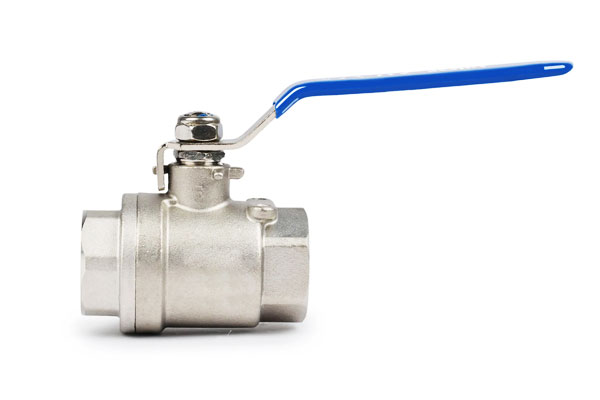
| Ngành công nghiệp / Khu vực | Các ứng dụng điển hình | Key Performance Requirement |
| Hàng hải & Ngoài khơi | Seawater fittings, Trục bơm, buộc chặt, Van | Điện trở clorua cao, prevention of pitting/crevice corrosion |
| Hóa chất & Thiết bị xử lý | Trao đổi nhiệt, lò phản ứng, đường ống, xe tăng | Resistance to acids, clorua, and sour service (Tiếp xúc với h₂s) |
| Ứng dụng đông lạnh | LNG storage and transfer piping, cryogenic valves | Retains toughness at extremely low temperatures (-196° C.) |
| Hàng không vũ trụ | Fuel lines, cryogenic components | Sức mạnh cao, kháng ăn mòn, low-temperature ductility |
| Năng lượng & Quyền lực | Boiler components, turbine parts in corrosive environments | Combination of corrosion resistance and mechanical integrity |
Applications of UNS S21800 (Nitronic 60)
UNS S21800 is optimized for galling and wear resistance while maintaining reasonable corrosion performance.
It is ideal for mechanical components subjected to sliding, adhesive contact, or high surface stress.
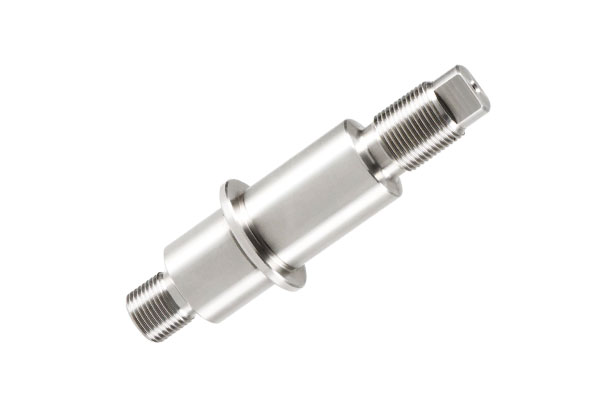
| Ngành công nghiệp / Khu vực | Các ứng dụng điển hình | Key Performance Requirement |
| Van & Pump Industry | Van thân, chỗ ngồi, Trục bơm, buộc chặt | High resistance to galling, Mặc trượt, adhesive seizure |
| Máy móc công nghiệp | Vòng bi, ống lót, high-wear mating surfaces | Độ cứng bề mặt, work-hardening capability, Ma sát thấp |
| ô tô & Thiết bị nặng | Buộc chặt, high-wear components, Thiết bị truyền động | Galling prevention, durability under repeated sliding or contact |
| Ứng dụng biển | Deck hardware, mechanical joints | Moderate corrosion resistance with high wear/galling protection |
| Xử lý hóa học | Mixer shafts, agitator blades | Wear-resistant components where moderate corrosion occurs |
Application Guidance
- Choose UNS S20910 when the primary concern is corrosion resistance in aggressive or sour environments, especially when toughness, Khả năng hàn, and low-temperature performance are required.
- Choose UNS S21800 when Galling, mặc, and sliding contact dominate failure modes, even if corrosion resistance is less critical.
- In complex assemblies, hybrid designs can leverage both alloys—using S20910 for corrosion-critical parts and S21800 for high-wear mating surfaces.
Surface engineering such as lớp phủ, nitriding, or PVD treatments can further extend service life when combined with these alloys.
9. Direct Comparison Table: UNS S20910 vs UNS S21800
| Tính năng / Tài sản | UNS S20910 (Nitronic 50) | UNS S21800 (Nitronic 60) | Practical Implication |
| Primary Focus | Kháng ăn mòn, độ dẻo dai | Wear/galling resistance, Độ cứng bề mặt | Guides selection based on environment and mechanical stress |
| Sức mạnh năng suất (MPA) | 350Mạnh420 | 320Cấm380 | S20910 has higher baseline strength; S21800 can achieve higher surface hardness via cold work |
| Độ bền kéo (MPA) | 650Mạnh750 | 600Mạnh700 | S20910 slightly higher; S21800 optimized for wear resistance rather than ultimate strength |
| Kéo dài (%) | 30Mạnh45 | 25Mạnh40 | S20910 more ductile; S21800 slightly less but adequate for fabrication |
| Độ cứng (HRB / HRC) | HRB ~85 typical annealed | HRB ~85, can increase with work hardening | S21800 better for galling and surface wear applications |
| Tác động đến độ dẻo dai | Xuất sắc; retains cryogenic performance | Tốt; lower at cryogenic temperatures | S20910 preferred in low-temperature or dynamic loading environments |
| Kháng ăn mòn | Rất cao | Vừa phải | Guides alloy choice in chemical, hàng hải, or sour-service applications |
| Mặc / Galling Resistance | Vừa phải | Rất cao | S21800 is the preferred option for moving parts, Van thân, và ốc vít |
| Sự chế tạo & Hàn | Xuất sắc; solution annealed or strain-hardened | Tốt; requires consideration for welding filler and machining parameters | S20910 easier to fabricate in complex geometries; S21800 may require tooling adjustments |
| Nhiệt độ dịch vụ tối đa | ~900°C | ~750°C | S20910 suitable for higher temperature corrosion exposure; S21800 for wear-exposed moderate temperatures |
| Gỗ (Số lượng kháng tương đương) | ~34 | ~23.4 | S20910 provides superior resistance to pitting and crevice corrosion, đặc biệt là trong |
10. Phần kết luận
CHÚNG TA S20910 vs S21800 are complementary alloys within the Nitronic family.
Pick S20910 where corrosion resistance (especially pitting/crevice and sour service) plus toughness and weldability are paramount.
Pick S21800 where galling and wear dominate and corrosion is a secondary concern.
In many real applications the optimum solution is a combination—design the system so each part sees the alloy best suited to its dominant failure mode, or apply surface engineering to extend service life.
Câu hỏi thường gặp
Are UNS S20910 and S21800 magnetic?
No—both are fully austenitic (or near-fully austenitic) in the annealed state, with magnetic permeability <1.005 (ASTM A342). Cold working may induce weak magnetism, but this is reversible via annealing.
Can I weld S21800 with standard stainless fillers?
Đúng, but select fillers and procedures to accommodate S21800’s high Si/Mn chemistry—consult welding procedure specifications and filler supplier guidance.
Which alloy resists sulfide stress cracking (SSC)?
S20910 is commonly accepted for many SSC environments and is used in NACE-subject applications; verify specific NACE/ISO certification and hardness limits.
Is Nitronic 60 (S21800) suitable for seawater?
It has reasonable general corrosion resistance in seawater but lacks the pitting resistance of Nitronic 50 or Mo-bearing grades; if seawater pitting is critical, choose S20910 or a higher PREN alloy.
Can either alloy be heat-treated to increase strength?
These austenitic alloys gain strength mainly by Công việc lạnh và hợp kim; conventional quench/temper treatments are not used to significantly increase strength. Solution annealing restores ductility/corrosion resistance.
